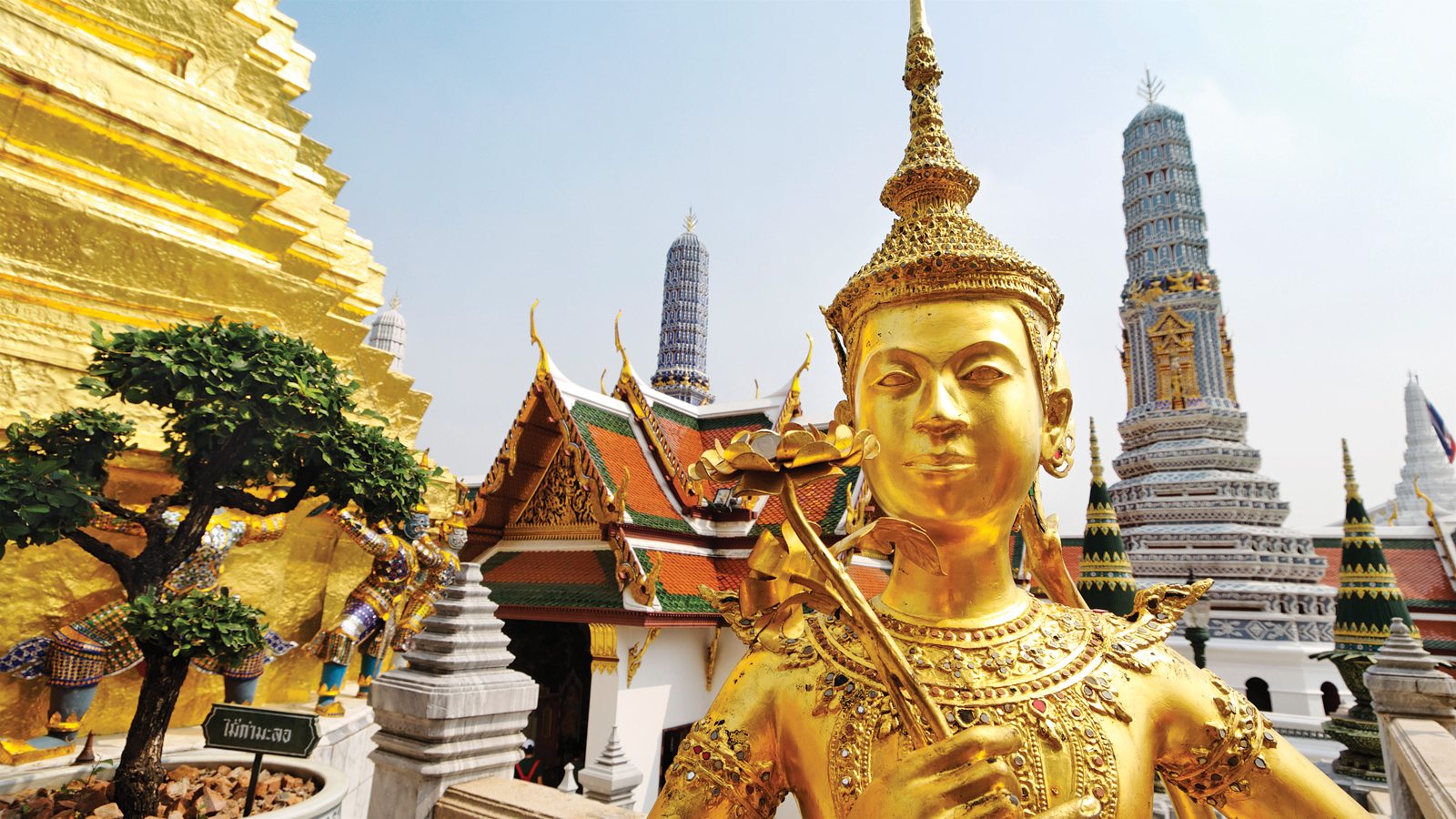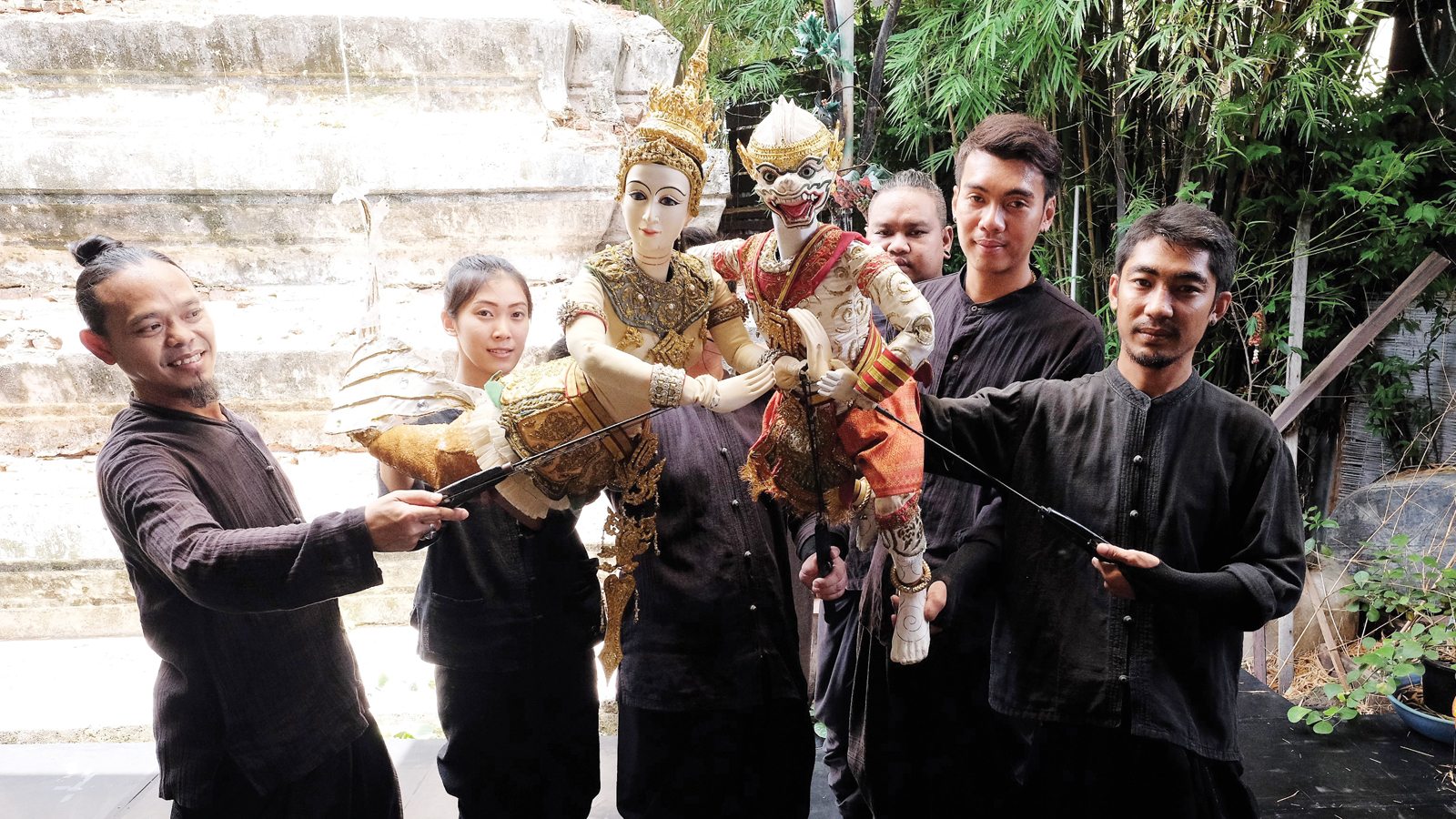Bangkok is both ancient and up-to-the-minute. It’s a centuries-old metropolis where waterside shanties give way to soaring skyscrapers, sprawling open-air markets abut modern megamalls, and gleaming Buddhist temples lie within sight of concrete apartment complexes.
To outsiders, it’s these temples that tend to define Thailand’s capital, and making a pilgrimage to the ancient shrines—including the 80-metre-high Wat Saket (its name, Golden Mount, a literal description of its remarkable appearance) or sacred Wat Phra Kaew (Temple of the Emerald Buddha) within Bangkok’s ornate Grand Palace—is still a great way to glean the country’s customs.
Indeed, seeing these monumental sites is easier than ever today: Affordable flights from Alberta can turn your dreams into reality. And once you’re in Bangkok, hotels and activities are also quite reasonable.
For hundreds of years, Thai people have been exposed to everyone, from their neighbours in Myanmar, Cambodia and China to travellers and traders from the West. Bangkok is a Southeast Asian melting pot to which ingredients continue to be added. No matter where I find myself in the coastal capital, it’s easy to see how outside influences have shaped the city’s (and the country’s) history, traditions and evolving modern culture.
The Museum of Siam is exemplary in this regard, offering an immersion in “what being Thai means.” Steps from Bangkok’s central Chao Phraya River, the neoclassical mansion’s interactive exhibits chronicle the 14th-century founding of Ayutthaya—the ancient capital of what was once known as Siam (a.k.a. Thailand today)—and the changes wrought by the 1765 Burmese-Siamese War. The country’s more recent history is examined as well, via displays on the 1932 coup that ushered in Siam’s constitutional monarchy, and on Thailand’s modern-day relationship with the West—and its impact on politics, education, fashion and food.

My time at the museum reinforces a few well-worn notions about Thai culture, but far more often reveals a place that defies all preconceptions. Challenged to look beyond the standard attractions, I discover a multilayered metropolis that stimulates all of my senses: dizzying sounds of rumbling traffic; musky scents wafting from the city’s canals mingling with sweet aromas of ripe fruit and flowering jasmine; and the skin-hugging humidity and sweltering heat.
Bypassing Bangkok’s bustling street traffic—and its elevated Skytrain mass transit system, which encircles the city’s historic heart—I take a scenic longtail boat ride toward my next destination. Known as the “Venice of Asia,” Bangkok is bisected by the Chao Phraya River and an attendant network of canals. The city’s growth has necessitated the infilling of many of these waterways (to improve roads and drainage systems), so the remaining canals are no longer as busy.
My boat passes a constellation of dilapidated shacks perched precariously on stilts. They’re still in use, but are, essentially, cultural relics. It’s a humbling glimpse into an old way of life that’s vastly different than the soaring high rises in the background.
MORE TO READ
The most interesting modern sights in Hanoi, Kuala Lampur and Tokyo
At a charming cluster of teakwood houses near Wat Kuhasawan, I find the canal-side community of Baan Silapin (Artist’s House). There’s an art gallery plus several restaurants and shops. But my attention is drawn to a sun-kissed courtyard where intricately crafted marionettes and masked dancers are performing the Ramakien, Thailand’s national epic, which was adapted from the sacred Hindu text known as Ramayana. Indian traders and scholars brought the narrative to this region several centuries ago, and since then it has inspired all manner of Thai art. It’s also another clear reminder of Thailand’s multifaceted past. After the show, artists graciously snap selfies with members of our smitten audience.
My camera comes out again during later explorations of Rama I Road and Sukhumvit Road, which cut through residential districts and Bangkok’s central shopping zone. Its glitzy megamalls, designed by some of the world’s most forward-thinking architects to showcase luxury brands, are among the clearest signs of Bangkok’s on-going modernization.
The EmQuartier retail project, completed in 2015, features a lush indoor garden, a 40-metre-high waterfall, more than 50 eateries, and an all-glass Sky Cliff that juts over the Sukhumvit neighbourhood 45 storeys below.
Central Embassy, a shopping centre and hotel built on the former gardens of Bangkok’s British embassy, boasts a uniquely patterned aluminum facade and a terraced interior reminiscent of the Guggenheim Museum in New York. The top floor’s 7,000-square-metre Open House is a contemporary public square: An art gallery, children’s playground, co-working space and expansive bookshop intermingle with restaurants and lounges—along with some of the best views in the city.

But Western-style malls haven’t completely crowded out Bangkok’s traditional gathering places. The labyrinthine Chatuchak Weekend Market is a 14-hectare open-air bazaar with thousands of stalls. Its bustling aisles are so engaging that for a while I forget to combat the daytime heat by staying hydrated and nourished. Recovery is achieved at one of the market’s low-key eateries, where I feast like a queen for less than $10. You’ll definitely get more Bangkok for your buck here: Canadian dollars stretch relatively far in Thailand.
Though Bangkok is famous for its street-food vendors, I find more just-as-cheap options—and more locals eating at them—in clean, air-conditioned shopping mall food halls. My favourite is Food Republic at Siam Centre. Its smorgasbord of regional Thai fare boasts the likes of fiery made-to-order som tam (papaya salad), hot pots filled with umami-rich beef-ball-and-brisket noodle soup, and highly photogenic cones of nam kang sai (shaved ice).
That said, Bangkok’s more refined restaurants best exemplify Thai cuisine’s balance of sour, sweet, salty, bitter and spicy. At Bo.Lan, chef-owners Duangporn “Bo” Songvisava and Dylan “Lan” Jones put a modern spin on traditional home cooking. The parade of flavour-packed amuse-bouches, multifaceted curries and smoky Thai shortbreads leaves a lasting impression on my palate. Another must-try is The Never Ending Summer, a buzzy dining room by architect-turned-restaurateur Duangrit Bunnag, where vegetables are given starring roles in dishes such as a delicate Chinese kale stem salad and a lacy, deep-fried omelette that’s showered in edible flowers.
MORE TO READ
The Dos and Don’ts of visiting Buddhist temples
After dinner one evening, I once again find myself choosing relaxed sophistication over tourist targets. Bangkok’s Khao San Road is a notoriously lively spot for Western visitors, but I avoid it in favour of watching the sun set at Moon Bar, an open-air haven 61 storeys above the haphazard cityscape. Sliding onto one of the long divans here for cocktails (they’re pricey, but come with a bevy of complimentary bar snacks) is a lower-key alternative to battling the swarms of selfie-snapping glitterati at the popular Sky Bar, which was famously featured on film in The Hangover Part II.
With so many things to see and do in Bangkok, it can be easy to overextend yourself. Don’t forget that Thailand isn’t just a cultural and culinary paradise; it’s also a mecca for mind and body renewal. Countless wellness businesses proffer a variety of unique treatments. While their exact origins are not well known, it’s generally accepted that many practices were historically influenced by neighbouring cultures (China, Myanmar, Vietnam and Laos) and trade with India and the West.
Wherever you are, a street-side parlour for a quickie foot massage likely isn’t far away. Or visit the majestic Wat Pho temple’s Wat Po Thai Traditional Massage School. Experts in Thai massage use their hands, feet, elbows, knees and legs to need, knock and rub away those aches you’ve happily accrued during your days exploring the modern side of Bangkok.

SEE IT WITH AMA!
Asia is more affordable and exciting than ever! AMA Travel counsellors can match you with the perfect experience for your interests.
Thailand Island Hopping (Silk Holidays)
Depart Sept. 2017–Oct. 2018
12-day island-hopping journey to Phuket, Krabi, Phi Phi and Koh Lanta; from $3,179 (airfare and taxes included)
Call a travel specialist: 1-866-667-4777
National Geographic Journeys Iconic Japan (G Adventures)
Depart Apr. 2018–Oct. 2018
12-day guided tour of Tokyo, Tsumago, Kanazawa-Shi, Hiroshima-Shi and Kyoto; from $5,999 (land-only)
Call a travel specialist: 1-866-667-4777
Vietnam, Cambodia & the Riches of the Mekong (AmaWaterways)
Depart Oct. 2017–Dec. 2018
8-day river cruise from Ho Chi Minh City to Siem Reap (or reverse); from $3,951 based on Oct. 16, 23 and 30, 2017 sailings in category C (AMA Travel extra on select sailings: Save $250 per person, plus $100 onboard credit per person)
Call a cruise specialist: 1-866-989-6594
TO YOUR HEALTH
Once you’ve consulted AMA Travel for your flights and hotel bookings, you should also consult your doctor or a travel-health specialist—at least six weeks before travelling abroad. You’ll want to ensure you’re immunized against viruses like Hepatitis A and B, measles and Japanese encephalitis, and know how to guard against other diseases for which vaccines don’t exist.
WE’VE GOT YOU COVERED
AMA Travel has travel insurance options* for medical emergencies, trip cancellation/interruption, baggage loss and delay, and flight/travel accidents. Members save 10% on travel medical insurance.
